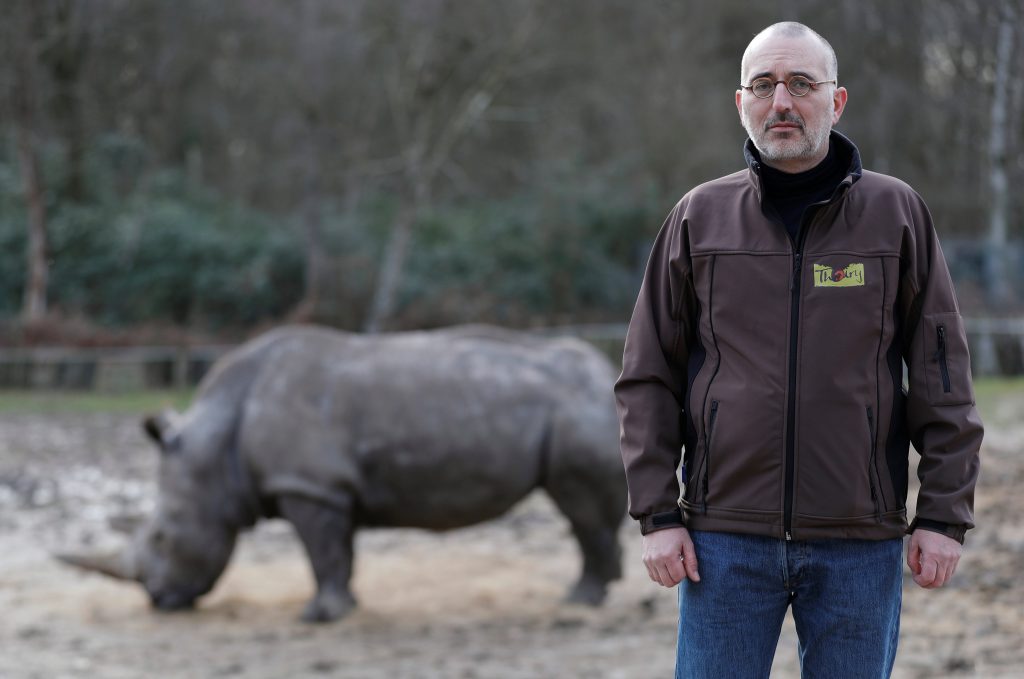Reuters photo
By
Binoy Kampmark
“There has never been a case like this in a zoo in Europe, an assault of such violence, evidently for this stupid trafficking of rhinoceros horns.”
Thierry Duguet, head of Parc Zoologique de Thoiry.
It was a matter of time. The war of poachers against those attempting to conserve species, and the animals themselves, took a gruesome turn this week. At the Parc Zoologique de Thoiry outside Paris, a white southern white rhinoceros named Vince was shot three times, with one horn sawn by attackers keen to bring the predations of the ivory market to Europe. (The second horn was only partially sawn).
The gruesome and bloody scene is worth noting on several levels. It brought the dynamically vicious struggle of an environmental war to Europe, and to zoos in particular. It was a statement on vulnerability (that of the security in place) and sheer daring – five members of the zoological staff resided on site, with the usual complement of surveillance cameras.
Whatever the problems in terms of conservation regarding these institutions (confined, caged animals generate their own set of moral debates), was a stark attack of profit and finance. Ivory fetches a good sum on the market, feeding a voracious demand based on quack medical assumptions.
Museums have also borne witness to such attacks. The desperation and the skill of such individuals varies, but here, desire, one heavy with a monetary quest (Vince’s horn could fetch up to £35,000), is unquestioned. Even specimens long petrified, gazing mutely at spectators for decades are potential targets of the ivory vultures. The instinct here is endemic of that same breed of human who believes that plunder is sacred and conservation a disgrace.
The question, then, is security. Will the zoos become garrisoned redoubts of layered security, fashioned for the next modern conflict on conservation, securing funding, not merely for conservation but for actual paramilitary security? The purse strings on that score will have to be loosened even as sacred rhinos are treated as golden geese.
Police in Britain, by way of example, are already speaking of urgent security checks to protect the 111 rhinos in the country. The description by a spokesman for the Zoological Society of London (ZSL) supplies a reminder about the gloomy prospects ahead, more reminiscent of a future battle than a case of mere security: “These animals are kept in secure enclosures guarded by full-time security teams, who also conduct regular patrols across the zoo.”[1]
Then comes the very idea that the rhinoceros horn trade be legalised in an attempt to make the industry less rapacious. These might take the form of harvesting horns – the removal of the horn without hurting the rhino; or the sale of confiscated stockpiles.
These effects would be felt from parkland to zoos. “The rationale,” claims South African conservationist economist Michael’t Sas-Rolfes, “is to bring the price down to a manageable level through constant legal supply.”[2]
The income created from such a normalised market could then be used to re-invest in conservation efforts. “It has become expensive to protect rhinos, and conservation organizations simply don’t have sufficient funds to invest in the level of field protection that is needed to sustain the number of rhinos we have.”
Critics feel that such sober, analytical assessments are misplaced to the point of miscalculation. Conservationists such as Dex Kotze argue that demand would be all too great, stripping supply. Then comes the issue of where the proceeds would actually find their way. “We are afraid,” noted Kotze in 2014, “that the money would be going to the wrong pockets.”
The shock of this recent incident has shaded previous cases where attackers have braved supposedly secure facilities to capture their sacred quarry, often dead ones. The ivory trade is one that took a man with a chainsaw to Paris’ Museum of Natural History in 2013 in an effort to remove the tusk of a 325-year old elephant skeleton that had belonged to King Louis XIV.
Police received calls about “a strange sawing sound at around 3am”.[3] On arriving, they witnessed a desperate thief in his 20s fleeing over a wall labouring with the ungainly booty. The chainsaw had been abandoned near the elephant skeleton. The thief, in turn, fractured his ankle in the botched attempt.
The poacher, as his own species, is highly innovative and flexible. Money markets and demand tend to create their own sophisticated pedigree of criminal. Traditional assumptions about a war on the plains, and in the environment where such animals gather, will have to be reconsidered. Money may not have smell, but it certainly has traction.
[1] https://www.theguardian.com/environment/2017/mar/08/police-to-visit-uk-zoos-and-wildlife-parks-after-rhino-killing-in-france
[2] http://www.dw.com/en/could-legalizing-rhino-horn-save-the-species/a-18137664
[3] http://gawker.com/5993080/man-breaks-into-museum-and-tries-to-steal-elephant-tusk-with-chainsaw



No Comments Yet!
You can be first to comment this post!